I remember my trip to Cornwall in 2013 with my wife and her parents very fondly, not least because my father-in-law is no longer with us. Whilst there on most evenings we were blessed with some beautiful sunsets. On that trip we were staying in the outskirts of Tintagel with a farm to provide the foreground for the handful of photographs I took.
In 2018, the first summer after my father-in-law passed, we returned to Tintagel with my mother-in-law. This time we were staying on a lovely cottage somewhere else on the outskirts of the town. The week we picked to go away just happened to be the start of a heatwave in the UK, so we were graced with some staggering sunsets almost every evening of the trip.
The view, even from our bedroom window, was stunning.


From our vantage point you could see the sun hit the sea, making for a spectacular view.

Even better, from the paddock of the cottage we had a bit more of a foreground to make the shots a little more interesting. The challenge, unlike the shots above (where I was aiming only for the sky), was finding the right balance of exposure to capture the brilliant vibrant colours of the sunset, whilst still making the foreground bright enough for you to see what it is. It’s hard not to overdo it and get a result that looks relatively natural. There are a couple of ways you can process images to get a result, with perhaps one offering a more natural look than the other.
The first is to simply take a single shot, slightly overexposed if possible, then when editing adjust the exposure, shadows and highlights to extract as much detail as possible out of a single image, such as below:
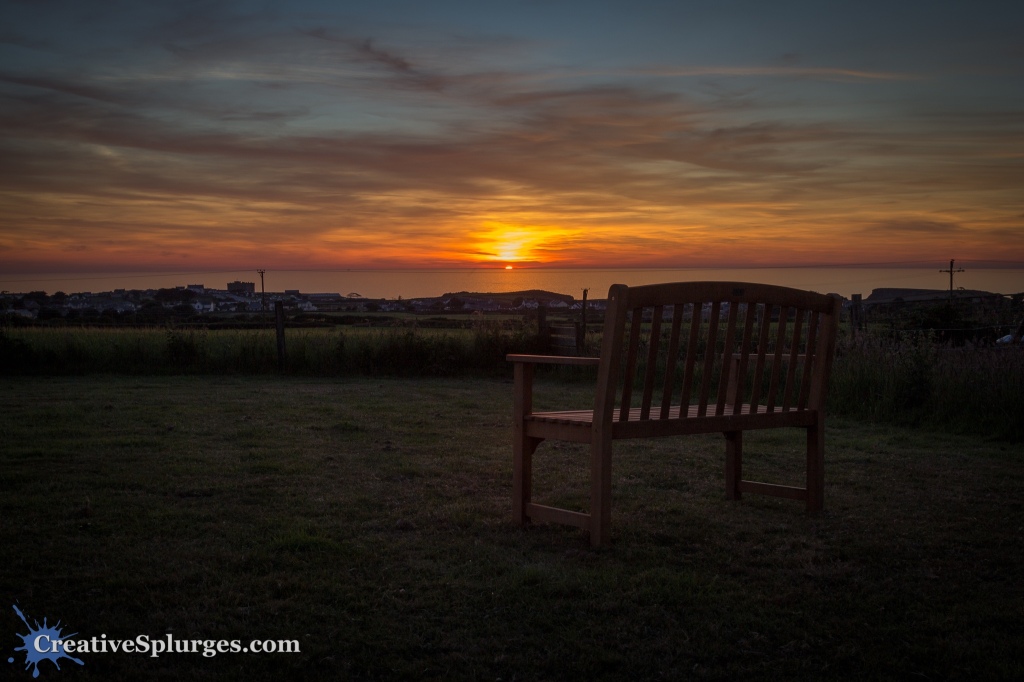
The downside to that method is if your shadows are too dark, there won’t be much detail to find, and you could end up with a noisy image.
The other, perhaps more well known way, is HDR or High Dynamic Range processing. Basically you take two or three shots at different exposures (traditionally, one normal, one underexposed by a stop or two, and one overexposed by the same amount), then use software to combine them, extracting all the details from each exposure as needed and resulting in a shot that contains more obvious detail, but might look a little less natural:
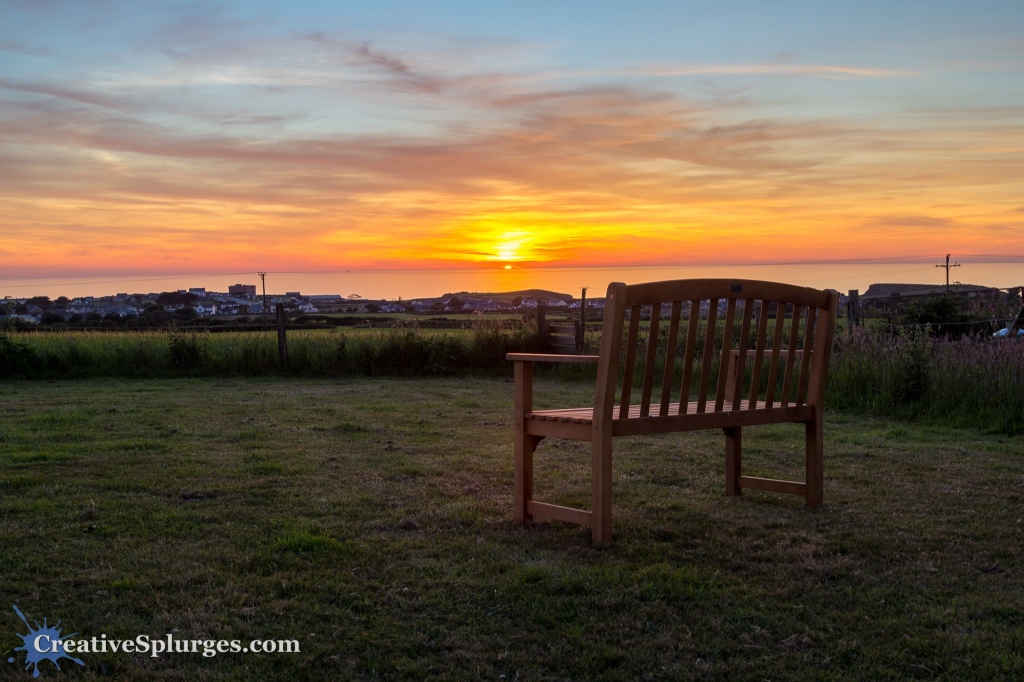
Comparing the two can be tricky. I like the detail I’ve gotten in the second photo of the bench in the foreground, but the sky clearly looks a lot better in the first photo, albeit with the bench disappearing into the shadows. You could ask me ten times on different days which one I’d prefer and half the time I’d give you a different answer. Let me know which you prefer in the comments.
The images in this post are processed using a mixture of the two techniques, although mostly they’re done using the former.
I also tried composing with just a fence and a field in the foreground.

I think the main reason I might prefer the non-HDR versions of these images is because the blue and orange hues of the sky are more vibrant in the single exposure shots.

Even once the sun itself had set the brilliant colours continued.

Facing in the other direction, you could see the Moon over the cottage where we were staying.

As I said at the start, we were gifted with sunsets of this magnitude every evening for a week. That does mean I might get confused over which photographs were from which days, but they are all being posted in chronological order. I guess if the sun appears suddenly higher in a photo it’s probably from a new day.

After using a bench as foreground garnish earlier I made use of a picnic bench.

Most of the time though I was content to use the field and the fence as a foreground, liking the green of the grass contrasting against the orange and blues of the sky.


I still occasionally just ignored the concept of foregrounds in order to get the last glimpses of the sun as it disappeared over the horizon.
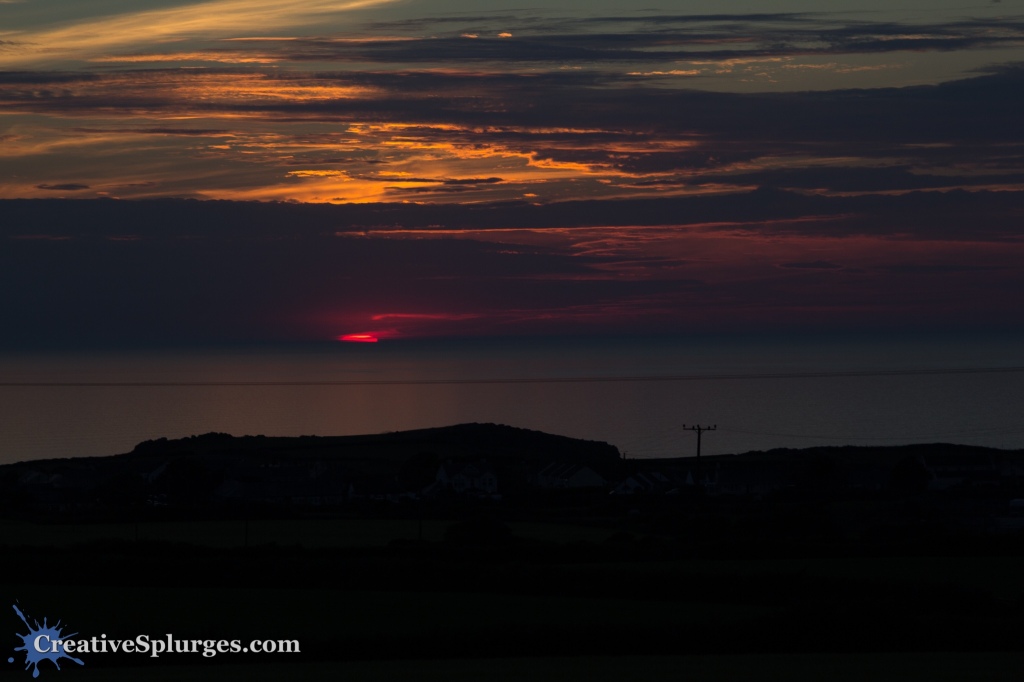

On a later day I was a bit more prepared and was out in the paddock in the latter stages of golden hour, before sunset had truly begun.


In order to counter the much brighter sun I broke out my lesser-used neutral density (ND) filter.

I love the colours of the grass in the background. Obviously I was exposing for that, not the sun through the filter. When you actually attach the filter to the lens and shoot properly I was able to get much longer exposures.
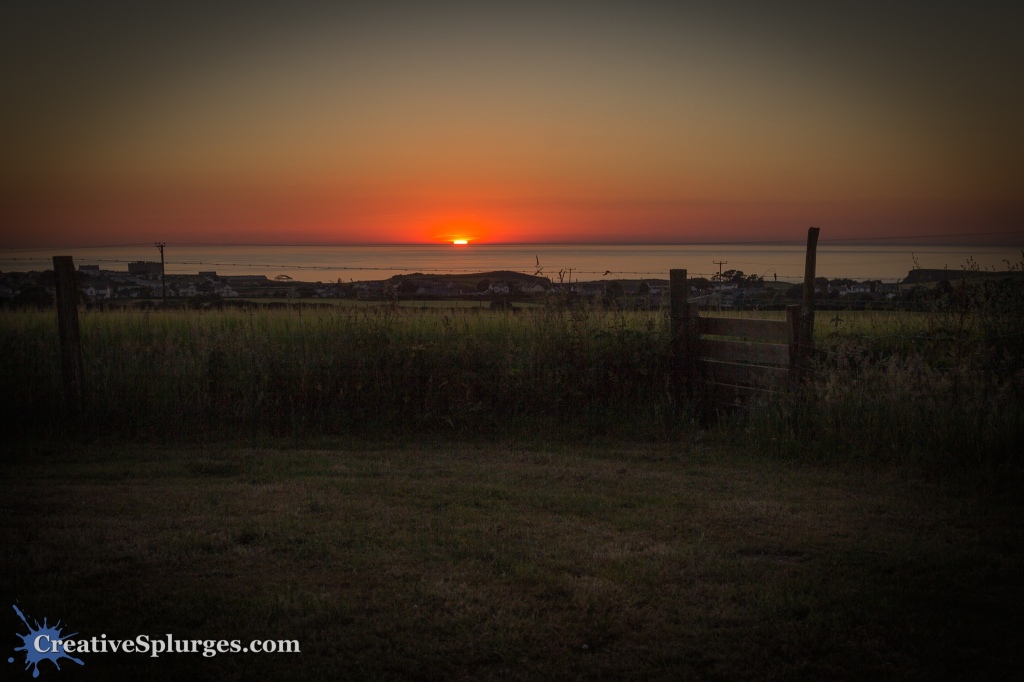
As you’d expect, each day I shot until the last sliver of sun had disappeared over the horizon and the sky had calmed down. Sadly we never saw any green flashes whilst we were there.

However I’m a lazy photographer by nature and the next day when the sun was offering yet another stunning display I didn’t bother with the filter. In hindsight, looking at the finished shots it did work nicely to soften the harshness of the sun itself. I’d like to say this was a learning experience for the next time but I hadn’t edited these by the next time, or indeed the time after. So hopefully it’s learned for the time after that.

Sometimes I took the exposure time right down to capture the sun and the clouds at the expense of most of the colour.
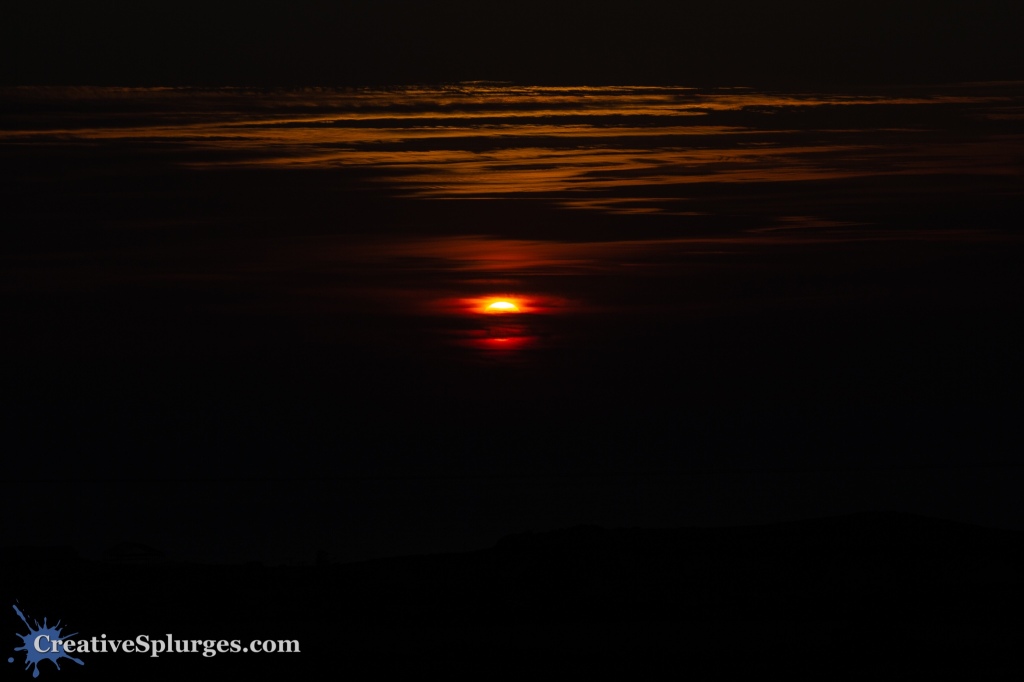

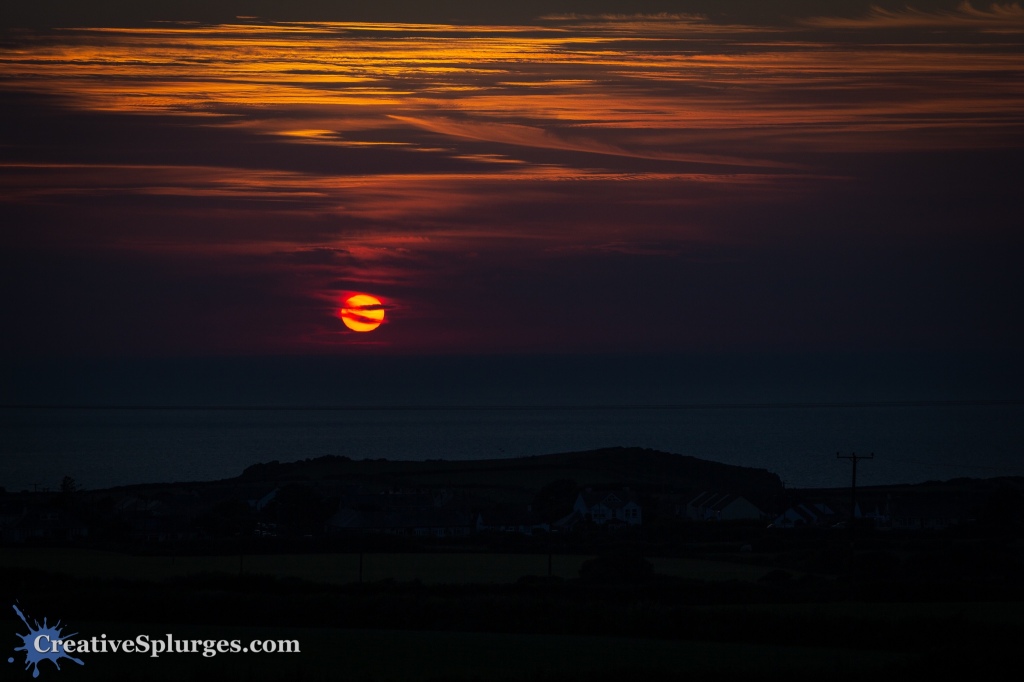
Of all the foreground elements I used, I generally used this gate the most often.



Sometimes my attempts at shooting the final slices of sun ended up looking a lot moodier than I’d really intended.

Of course, usually I ended up photographing that gate.

The final sunset of our holiday was one of the more intense ones.
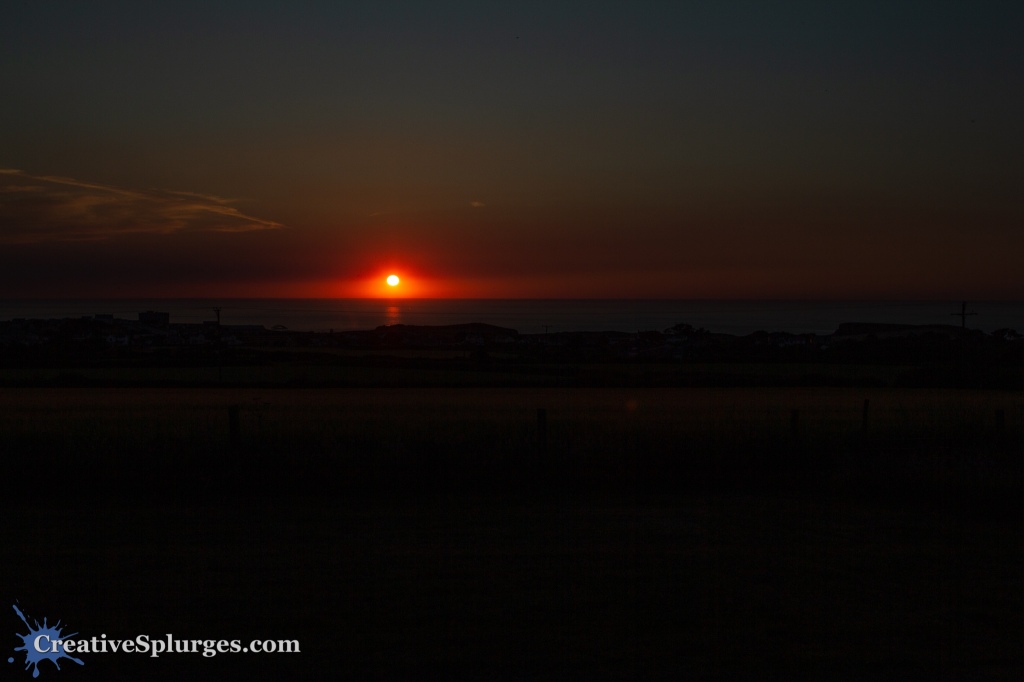




By this point in the holiday everyone else staying in the block of cottages had gotten wise to the natural beauty on display.

But with that, the sun set for the last time on our holiday.

I would hope that you can clearly see the difference in quality and approach from the sunsets I photographed in 2013 and these ones from five years later.
We returned to the same place in 2019 and had a similarly good batch of sunsets, so expect to see images of those somewhere down the line. We did the same in 2020. And later this year we’ll be going back again, so maybe we’ll be lucky for a fifth time.


I like the insight that we need to look at the images and learn for the next time. I find every time I shoot multiple rolls of film without developing between, I missed a valuable lesson I could’ve applied.
In film photography, I have set up my camera in the afternoon, taken half the exposure when the foreground was forelit and comeback later for the sunset. This also works well with city scapes, capturing them before and after the lights go on. I miss that trick in Digital.
LikeLike